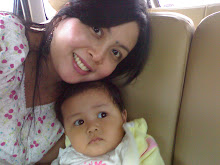| It used to be thought that real learning was all about teaching a child to read write and do maths. However, there is growing recognition that developing our children’s ability to think and solve problems can be a better indicator for success long-term.
Creative thinking is about questioning and experimenting. It is about picking up an idea and expanding on it. The best time to develop these skills is before a child turns five. Creative thinking helps children develop positive social skills. Many problems and ideas that children want to solve are solved best with another person or in a group. Children learn important lessons about working together and negotiating while they think creatively. Try these ideas: 1. Stimulate their natural interests. Children are quick to develop their own fascinations. If your child loves trains, for example, take them to a train station. Talk to them about how trains work. Go to the library and find out about the history of trains. Using boxes make a train together. Work out how the boxes will stay together, and talk about all the parts a train needs to run. Instead of telling them how to make it, encourage them to come up with their own solutions. This method of learning works for any topic from trains to princesses to dinosaurs. 2. Get them moving. Many preschoolers learn best when they are moving. Make up an obstacle course and try to work out different ways to move around it Or you could have them role-play everyday objects -- a toaster with toast inside, a lawnmower or a vacuum cleaner. Talk about what their bodies need to show and ask them questions such as “How do you suck up dirt?” Or “Where do I plug you in?” Put on some music and get them to find different ways to move slowly or quickly, loudly and softly. 3. Play guessing games. Guessing games are great for helping your child develop good questioning skills. You can focus on a particular subject such as zoo animals, farm animals or transport. Take turns to choose an object or animal and the rest of the family asks questions to find out what it is. Make the rules looser than the original game so any type of question can be used.
4. Provide creative materials. Provide your child with easy access to creative materials. Set up ground rules such as suitable areas and times to be messy and creative, and then let them loose with paper, pens, crayons, play dough, water play, pipe cleaners and music. Children can use these items to experiment just for the fun of it. While it is good for them to use these independently, it can also be a good opportunity to expand their problem-solving skills. Talk about how to construct different shapes, make new colors or fill a page with a picture. Work alongside them rather than with them -- you could make your own creation. 5. Use misbehavior to promote creativity problem solving. If you have a child who likes to unscrew all the handles off cupboards, or throw plates out a second-storey window, it is likely you already have a creative thinker. Stimulate their creative side positively by getting them to find a creative consequence for their actions. Brainstorm a range of solutions together and select the most appropriate one. 6. Record ideas together. If you come across a problem or subject your child is fascinated about, make a chart of all the different things they want to know. Record their ideas and thoughts, and any questions they have. Encourage your child to look deeper than “I want to know about...” to what they specifically want to find out. For example, if they are interested in how the body works, what do they really want to know? Do they want to know how we use food, or what our bones are made from? Asking your child specific questions teaches them to direct their interest and find the answers they really want. 7. What would happen if? This is a good game to play in a car. Ask children to predict what might happen in a particular problem. These can range from serious problems such as “What would happen if no one put their rubbish in a bin?” to ‘What would happen if you grew wings? Brainstorm as many outcomes as possible, from serious to outlandish ideas. When encouraging creativity, stay relaxed. Too much supervision and direction takes all the fun out. But do encourage your child to finish any projects once they have started. It can be tempting to take over when a child is flagging, but persevering will give them the most satisfaction in the end. |
ARE YOU RAISING A CREATIVE THINKER?
Labels: little treasures, mom and baby info
Subscribe to:
Post Comments (Atom)

No comments:
Post a Comment